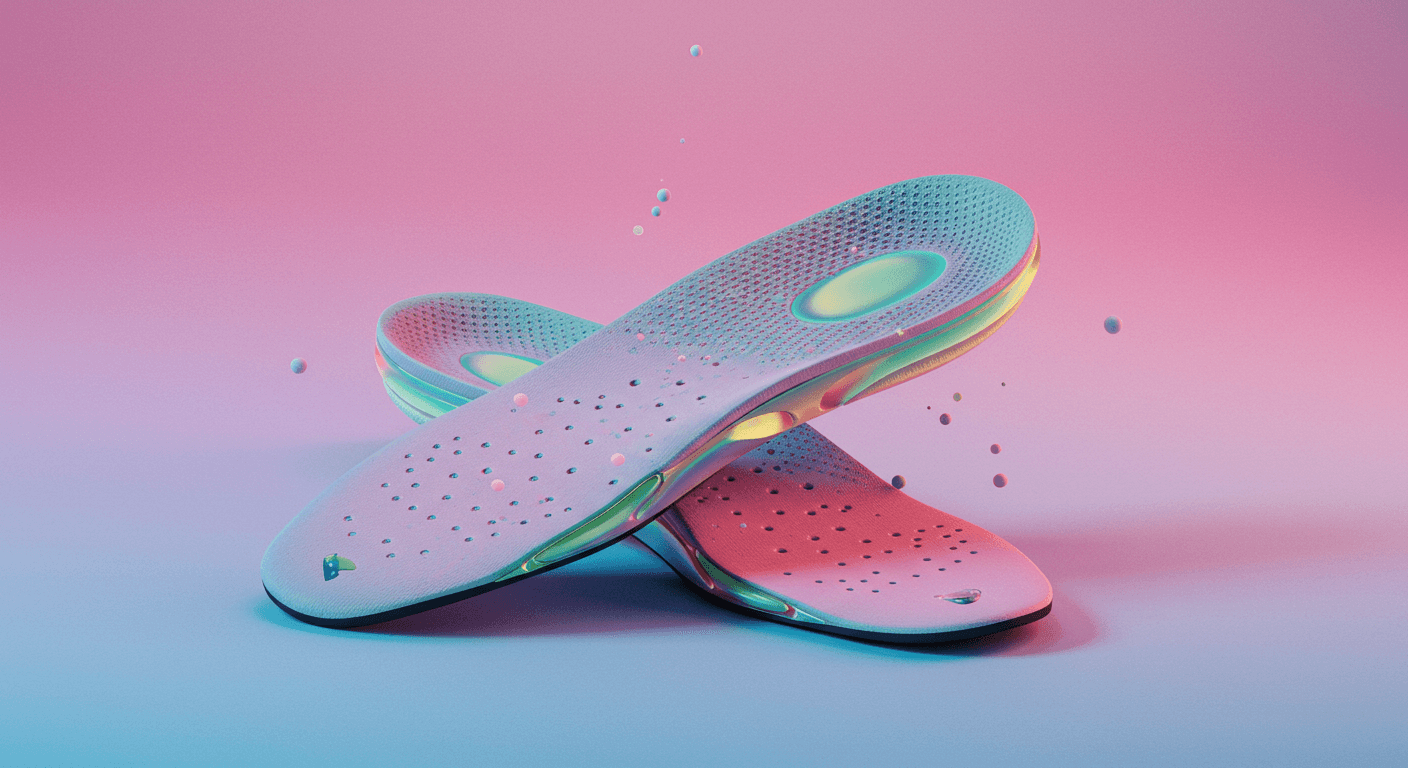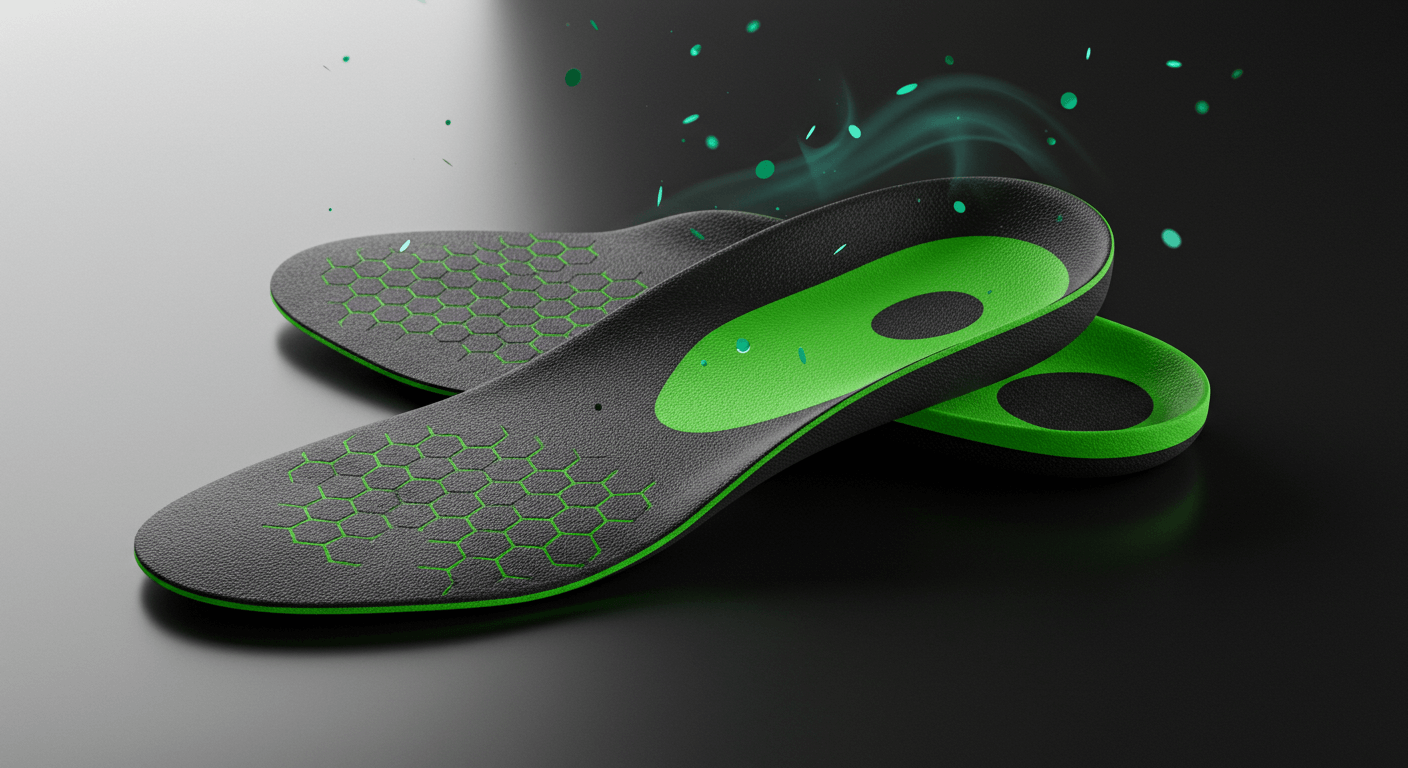People of all ages and activity levels experience knee discomfort, which is one of the most prevalent musculoskeletal problems. Knee pain can make daily tasks much more difficult, whether it is caused by arthritis, exercise, long periods of standing, or just the normal aging process. Even minor problems with posture, gait, or foot alignment can increase the strain on the knees because they bear the weight of the body. Insoles for shoes frequently enter the discussion as a potential remedy for such.
The purpose of footwear insoles is to give your shoes extra support, cushioning, and alignment correction. They are often used by those who want to lessen knee pain, increase comfort, and shield their joints when moving. However, the crucial question still stands: Do insoles genuinely alleviate knee discomfort, or are they only an additional piece of equipment that provides momentary comfort?
Understanding the biomechanical relationship between the feet and knees holds the key to the solution. Overpronation, collapsed arches, or flat feet can all lead to poor foot alignment, which can put stress on the joints by causing the knees to spin inward. With each stride, insoles can assist in redistributing pressure, correcting posture, and absorbing stress, especially if they have arch support or bespoke patterns. Some people see a noticeable reduction in knee pain as a result of this.
But not all cases of knee discomfort respond to insoles, and not all insoles are made equal. How beneficial an insole may be depends on a number of factors, including the type of insole, your unique foot structure, and the underlying reason for your discomfort.
The functioning of insoles, the conclusions drawn from scientific studies regarding their efficacy, their drawbacks, and advice for selecting the best pair will all be covered in this guide. You’ll know more clearly at the end whether or not shoe insoles may actually relieve knee discomfort.
The Connection Between Foot Alignment and Knee Pain
Because the human body is constructed like a chain, every joint and muscle depends on the others to operate properly. The feet are far more important than most people think when it comes to knee health. Force is transferred from the ground upward with each step, and if your feet are not positioned correctly, this force may enter your knees unevenly, causing pain and strain.
One of the most frequent causes of knee pain is improper foot position. Overpronation, falling arches, and flat feet are among the conditions that cause the feet to roll inward excessively when walking. The natural mechanics of movement are altered by this misalignment, causing the knees to rotate abnormally. Ligaments, cartilage, and tendons surrounding the knee joint may get irritated over time as a result of this repeated tension.
Conversely, high arches can also cause issues. Impact forces are sent straight to the knees due to reduced shock absorption in the feet, resulting in further wear and tear. Long-term stress can result from even minor misalignments, particularly for those who stand, run, or walk for extended amounts of time every day.
Insoles for shoes can help in this situation. The right arch support, cushioning, and stability that insoles offer aid in the restoration of normal alignment. They prevent inward or outward rolling that puts strain on the knees by redistributing pressure across the feet. Reducing knee discomfort and improving joint function can often be achieved by addressing the foundation at the foot.
How Footwear Insoles Work for Pain Relief
More than just cushioned inserts, footwear insoles are made to support the feet’s natural mechanics and lessen knee strain. Insoles can reduce joint stress while improving the comfort of standing, running, and walking by addressing the underlying reason for misalignment.
Insoles primarily relieve pain by supporting the arch. The arch of the foot is raised and stabilized by well-made insoles, which stop overpronation (rolling inward) and supination (rolling outward). The knees can track properly during movement when the foot stays in its natural posture, which minimizes needless twisting or pressure.
Shock absorption plays another crucial role. Impact forces are created with every step and move upward into the knees and legs. A large portion of this energy is absorbed by cushioned insoles, which lessen the impact and disperse it uniformly throughout the foot. In addition to reducing knee pain, this also helps avoid lower back, hip, and ankle tiredness and discomfort.
Redistributing pressure and weight is another way insoles function. Inadequate support can cause imbalances that put pressure on the knees by causing some foot portions to bear more weight than others. A high-quality insole creates a more secure base by distributing pressure over the entire foot.
Insoles offer specialized support for people with particular ailments, including high arches, plantar fasciitis, or flat feet. Specifically, orthotic insoles are made to address biomechanical problems that cause knee pain.
Insoles serve as a remedial instrument. One of the main causes of joint tension is addressed by correctly placing the feet and cushioning each stride. This easy shoe modification can greatly increase mobility, lessen pain, and improve general comfort for a lot of people.
Possible Limitations and Drawbacks
Insoles for shoes can be quite helpful for many people with knee pain, but they are not a panacea. Before depending on them as a long-term solution, it is important to understand their limitations and considerations, as they are similar to those of any medical or lifestyle intervention.
The fact that not all insoles meet the needs of every person is one of the most prevalent disadvantages. Although they are readily accessible and reasonably priced, over-the-counter insoles are made for everyday usage. For someone with a particular knee issue, these mass-produced alternatives might not offer the necessary level of support or adjustment. In some situations, a podiatrist’s bespoke orthotics may be more beneficial but also substantially more expensive.
The adjustment period is an additional constraint. Because it takes time for the body to adjust to the new foot alignment, some users initially feel uncomfortable. Even the long-term advantages might not show up until after regular usage, which can occasionally deter consumers from continuing to use.
Additionally, experts warn that not all of the underlying causes of knee discomfort are addressed with insoles. For instance, insoles might not be enough to relieve knee discomfort brought on by arthritis, tendon injuries, or severe cartilage damage. In these situations, insoles ought to be a component of a more comprehensive treatment strategy that may involve medication, physical therapy, or even surgery.
Durability is an additional consideration. Over time, insoles, especially cushioned ones, have a tendency to deteriorate. If an insole is worn out, it may no longer offer sufficient support, and using it further could make the pain worse. The long-term expense is increased by the requirement for regular replacement.
How to Choose the Right Insoles

To guarantee that you receive both comfort and efficient support, choosing the appropriate insoles for knee pain treatment is crucial. With so many alternatives, knowing what to look for can mean the difference between ongoing discomfort and long-lasting relief.
Finding the cause of your knee pain is the first step. Strong arch support and heel stability are typically suggested insoles if the cause is misalignment, overpronation, or flat feet. However, shock-absorbing cushioned insoles can be a better option if your pain is brought on by high-impact activities like running or prolonged standing.
It’s also crucial to think about the kind of shoes you wear most frequently. There are three-quarter insoles for dress shoes, full-length insoles for sporting shoes, and even specific boot inserts. Selecting the appropriate fit guarantees increased comfort and efficiency during your everyday tasks.
Custom orthotics recommended by an orthopaedic doctor or podiatrist may be the best option for people with severe or chronic knee discomfort. They are more costly than over-the-counter alternatives, but they offer more focused relief since they are made to fit your particular foot shape and stride.
Durability of materials is another important consideration. Each of memory foam, gel, and EVA foam has advantages. Gel insoles are excellent at absorbing shock, while memory foam offers comfort that conforms to the contours of the foot. EVA foam is a wonderful all-around choice because it is strong and lightweight.
Lastly, keep in mind that insoles ought to feel encouraging without being constrictive. They shouldn’t hurt or put pressure on you, although there might be a short adjustment period. To preserve their benefits, insoles should always be replaced when they begin to exhibit wear. You can proactively lessen knee strain and increase mobility by selecting insoles with attention.
Conclusion

Even basic everyday tasks can become difficult when knee pain is present, but the correct shoe insoles can be very helpful in reducing discomfort and offering relief. Insoles assist in lessening knee strain and promote better posture by addressing typical problems, including overpronation, poor alignment, or inadequate cushioning. They can be a useful aid in controlling discomfort and avoiding more joint stress, even though they cannot treat underlying issues.
Choosing the appropriate insoles for your unique requirements is the secret to success. How well they work depends on a number of factors, including material, arch support, cushioning, and compatibility with your footwear. High-quality over-the-counter insoles can offer adequate support for mild to severe pain. Custom orthotics and expert advice, however, might be more advantageous for people with severe or persistent knee problems.
Additionally, keep in mind that insoles function best when used in conjunction with a more comprehensive knee care regimen. Maintaining a healthy weight, stretching, appropriate footwear, and regular exercise can all help to lessen joint tension. You can move more comfortably and enhance the long-term health of your knees with the correct support and lifestyle choices.
